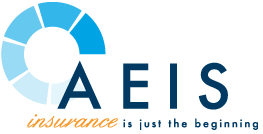Types of Employee Benefits: A Comprehensive Breakdown
Written by: AEIS

Importance of Employee Benefits
A strong employee benefits package is essential for attracting and retaining top talent. Competitive benefits improve job satisfaction, boost productivity, and reduce turnover. They also demonstrate an employer’s commitment to workforce well-being, fostering a positive workplace culture.
Beyond employee retention, benefits can provide tax advantages and help ensure compliance with labor laws. Understanding the available options allows businesses to build a package that supports both their employees and long-term success.
Main Types of Employee Benefits Offered
Employee benefits typically fall into several key categories:
- Health Benefits – Medical, dental, and vision coverage to support employees’ well-being.
- Financial Protection – Life and disability insurance to provide income security.
- Work-Life Balance – Paid time off, remote work options, and flexible schedules.
- Supplemental & Voluntary Benefits – Additional coverage like accident insurance and critical illness plans.
- Other Perks – Options such as FSAs, HSAs, fertility benefits, discount programs, and pet insurance.
Offering a well-rounded benefits package helps businesses attract talent and enhance employee satisfaction.
Health Benefits
Health benefits are a cornerstone of any employee benefits package, helping employees access essential medical care while managing costs. Providing quality health coverage can improve employee retention, reduce absenteeism, and boost overall well-being.
Group Health Insurance
Group health insurance allows employers to offer comprehensive medical coverage at a better value than most individual plans and usually with more participating providers. These plans typically cover preventive care, doctor visits, hospital stays, and prescriptions, with premium costs usually shared between employers and employees.
Overview of Major Carriers
California businesses have access to several leading health insurance carriers, including but not limited to, Aetna, Anthem Blue Cross, Blue Shield of California, Cigna, Health Net, Kaiser Permanente, and UnitedHealthcare. Each carrier offers different plan structures, networks, and pricing, allowing employers to select coverage that best fits their workforce’s needs.
Types of Medical Plans: HMO, PPO, HDHP
Employers can select from different health plan types:
- Health Maintenance Organization (HMO) – Requires employees to use a specific network of doctors and obtain referrals for specialists. Typically lower-cost but with less flexibility. No Out-Of-Network Coverage.
- Preferred Provider Organization (PPO) – Offers greater flexibility to see both in-network and out-of-network providers, usually with higher premiums than other plan types.
- High Deductible Health Plan (HDHP) – Features lower premiums and higher deductibles with the ability to be paired with a Health Savings Account (HSA) for tax-advantaged medical savings.
Alternate Funding Options
For businesses seeking cost control beyond traditional fully insured plans, alternative funding strategies include:
- Health Reimbursement Arrangements (HRAs) – Employer-funded accounts that reimburse employees for qualified medical expenses.
- Level Funding – A hybrid approach offering predictable monthly costs with potential savings based on claims.
- Self-Funding – Employers assume the financial risk of healthcare costs but gain flexibility in plan design and cost management. Typically a strategy reserved for large organizations.
Each funding model has unique advantages, and AEIS can
help businesses explore the best fit for their needs.
Dental Insurance
Offering dental insurance helps employees maintain their oral health, which is closely linked to overall well-being. Plans typically cover preventive care like cleanings and exams, as well as basic and major procedures such as fillings, crowns, and root canals. Some plans include coverage for orthodontia as well.
Employers can choose from:
- Fully Insured Plans – Fixed premiums with coverage managed by an insurance carrier.
- Self-Funded Plans – Employers take on the financial risk but gain cost control. This is not typically seen with small to midsize businesses.
- Discount Plans – Employees receive reduced rates from in-network providers without traditional insurance coverage.
Providing dental benefits enhances employee satisfaction and can reduce long-term healthcare costs by preventing more serious health issues.

Vision Insurance
Vision insurance helps employees access affordable eye care, including routine exams, prescription glasses, and contact lenses. Many plans also offer discounts on corrective surgery, such as LASIK.
Coverage typically includes:
- Annual eye exams – Detecting vision changes and underlying health conditions.
- Prescription eyewear – Frames, lenses, and contact lenses with cost-sharing.
- Discounts on procedures – Savings on laser vision correction and other treatments.
Since eye health is linked to overall well-being, offering vision insurance can improve both employee health and productivity.
Life and Disability Insurance
Life and disability insurance provides financial security for employees and their families in case of
unexpected events. These benefits help protect income and ensure financial stability during difficult times.
Life Insurance
Employers can offer:
- Basic Group Life Insurance – Employer-paid coverage providing a set benefit amount.
- Voluntary Life Insurance – Employees can purchase additional coverage at group rates for themselves and their spouses.
Disability Insurance
Disability insurance replaces a portion of an employee’s income if they are unable to work due to illness or injury. Options include:
- Short-Term Disability (STD) – Covers temporary disabilities, typically lasting a few weeks to months.
- Long-Term Disability (LTD) – Provides extended income protection for serious conditions.
Supplemental Voluntary Benefits
Supplemental voluntary benefits give employees additional financial protection beyond standard health, life, and disability insurance. These benefits are often employee-paid but offered at group rates for affordability.
Voluntary Life Insurance
Allows employees to purchase extra life insurance coverage to supplement their employer-provided plan.
Critical Illness Coverage
Provides a lump-sum payout if an employee is diagnosed with a serious illness such as cancer, heart attack, or stroke.
Accident Insurance
Covers expenses related to accidental injuries, including emergency treatment, hospital stays, and rehabilitation.
Hospital Indemnity Plans
Pays a fixed amount for hospital stays, helping employees manage out-of-pocket expenses not covered by health insurance.

Paid Time Off
Paid time off (PTO) is a key benefit that supports employee well-being and work-life balance. Employers may offer different types of PTO, including:
- Vacation Days – Time off for personal travel, relaxation, or leisure.
- Sick Leave – Paid time off for illness or medical appointments.
- Paid Holidays – Company-designated holidays when employees receive paid leave.
- Personal Days – Flexible days off for personal needs or emergencies.
In California, certain paid leave policies, such as sick leave, have legal requirements. Providing a competitive PTO policy helps attract and retain employees while promoting productivity and job satisfaction.
Remote Work
Remote work has become a highly valued benefit, offering employees flexibility while helping businesses attract and retain talent. Employers may implement different remote work models, such as:
- Fully Remote – Employees work entirely from home or another location.
- Hybrid Model – A mix of in-office and remote workdays.
- Flexible Work Arrangements – Employees can choose where and when they work within set guidelines.
Additional Benefits to Consider
Beyond traditional benefits, many
employers are expanding their offerings to meet evolving employee needs. These
additional perks can enhance job satisfaction and set businesses apart in a competitive job market.
Flexible Spending Accounts (FSAs)
FSAs allow employees to set aside pre-tax dollars for qualified expenses. Options include:
- Health FSAs – Cover medical, dental, and vision expenses.
- Dependent Care FSAs – Help pay for childcare or elder care.
- Commuter FSAs – Reduce costs for public transit and parking.
Health Savings Accounts (HSAs)
Available to employees enrolled in a high-deductible health plan (HDHP), HSAs offer tax advantages and long-term savings for medical expenses.
Pet Insurance
Covers veterinary costs, helping employees manage expenses related to pet care.
Lifestyle HRAs
Employers can offer stipends for wellness-related expenses such as gym memberships, fitness classes, and mental health programs.
Fertility Benefits
Assists employees with fertility treatments, egg freezing, and adoption support—an increasingly valued benefit in today’s workforce.
Technology Solutions for Benefit Management
Platforms that integrate all benefits into a single system make it easier for employees to access and manage their plans, improving overall benefits utilization.
Professional Development Options
Supporting employees’ career growth fosters loyalty and strengthens workplace culture. Employers can offer:
- Tuition Reimbursement – Financial assistance for job-related education.
- Certification & Training Programs – Sponsorship for industry credentials and skill-building.
- Mentorship & Coaching – Guidance from experienced professionals.
- Career Development Stipends – Funding for conferences, courses, and leadership programs.
What Benefits Are Required to Offer to Employees in CA
California has specific laws mandating certain employee benefits. Employers must comply with these requirements to avoid penalties and ensure legal compliance. Key mandated benefits include:
- Health Insurance (for Applicable Large Employers) – Under the Affordable Care Act (ACA), employers with 50 or more full-time employees must provide health insurance that meets minimum coverage and affordability standards.
- Paid Sick Leave – California law requires employers to provide at least 24 hours (or three days) of paid sick leave per year.
- Family and Medical Leave – Eligible employees may take unpaid, job-protected leave under the California Family Rights Act (CFRA) and the federal Family and Medical Leave Act (FMLA).
- Paid Family Leave (PFL) & State Disability Insurance (SDI) – Funded through employee payroll deductions, these programs provide partial wage replacement for family caregiving and medical leave.
- Workers’ Compensation Insurance – Employers must provide coverage for work-related injuries and illnesses.
- COBRA & Cal-COBRA – Employers must offer continuation of health coverage for eligible employees after job loss or other qualifying events.
Understanding these requirements helps businesses remain compliant while supporting their employees' well-being.
Customize the Right Benefits Offerings with AEIS
Building the right benefits package requires balancing employee needs, compliance, and costs. With so many options available, expert guidance is key to making informed decisions.
AEIS helps businesses design competitive, cost-effective benefits plans tailored to their workforce. Whether you need traditional coverage, alternative funding strategies, or emerging perks like fertility benefits and lifestyle HRAs, we provide customized solutions.
Contact AEIS today to create a benefits package that supports your employees and strengthens your business.
We're here to help.
Schedule a free phone consultation today.
Latest Insights
Advanced Estate & Insurance Services, Inc. CA License #0M90887
Duda Website Design & SEO by RivalMind



